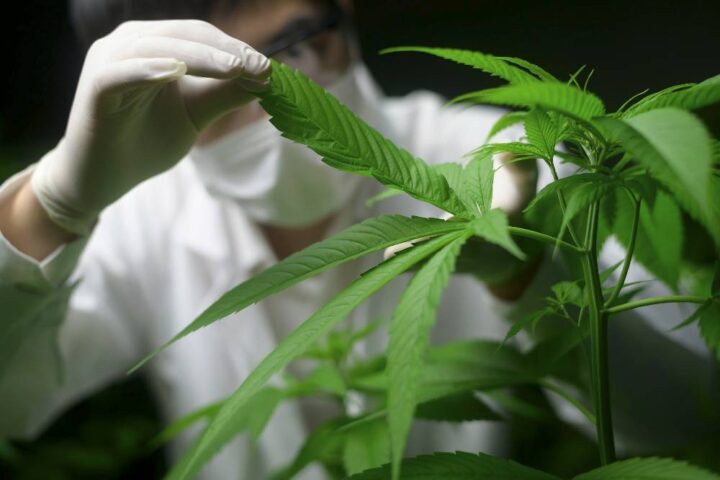Inside Look: The Effects of Indoor Weed Growing Practices
As the cannabis industry continues to expand, indoor cultivation has emerged as a popular method for producing high-quality cannabis year-round. Indoor weed growing practices involve cultivating cannabis plants in controlled environments, such as grow rooms, greenhouses, or indoor farms, where environmental factors like temperature, humidity, and lighting can be meticulously regulated.
In this exploration, we’ll take an inside look at the effects of indoor weed growing practices, examining their impact on plant growth, potency, flavor, and environmental sustainability.

Optimal Growing Conditions:
Temperature and Humidity Control:
Indoor cultivation allows growers to maintain precise control over temperature and humidity levels, creating optimal growing conditions for cannabis plants.
By controlling these environmental factors, growers can minimize stress on plants, reduce the risk of pests and diseases, and promote healthy growth and development. Temperature-controlled environments also enable growers to cultivate cannabis year-round, regardless of external weather conditions, ensuring consistent harvests and product quality.
Lighting Systems:
One of the key components of indoor weed growing practices is the use of artificial lighting systems to simulate natural sunlight. High-intensity discharge (HID) lamps, light-emitting diodes (LEDs), and fluorescent lights are commonly used to provide the full spectrum of light required for photosynthesis and plant growth.
By adjusting light intensity, duration, and spectrum, growers can optimize plant growth, flowering, and cannabinoid production, resulting in robust and potent cannabis crops.
Effects on Plant Growth and Potency:
Increased Cannabinoid Production:
Indoor cultivation techniques, such as hydroponics and soilless growing methods, have been shown to enhance cannabinoid production in cannabis plants.
By providing optimal growing conditions and nutrient uptake, indoor-grown cannabis plants can produce higher concentrations of cannabinoids, including THC (tetrahydrocannabinol) and CBD (cannabidiol), compared to outdoor-grown counterparts. This increased potency is prized by both recreational and medicinal cannabis users seeking potent and consistent products.
Enhanced Terpene Profiles:
Terpenes are aromatic compounds found in cannabis plants that contribute to their distinct flavors and aromas. Indoor weed growing practices can influence the terpene profile of cannabis strains, resulting in unique and complex flavor profiles.
By controlling environmental factors such as temperature, humidity, and light spectrum, growers can manipulate terpene production and enhance the aromatic qualities of their cannabis crops. This attention to detail allows indoor-grown cannabis to exhibit rich and diverse terpene profiles that appeal to discerning consumers.
Environmental Sustainability:
Resource Efficiency:
While indoor cultivation offers precise control over growing conditions, it also requires significant energy, water, and resource inputs to maintain optimal conditions.
High-intensity lighting systems, climate control equipment, and irrigation systems contribute to the energy consumption and environmental footprint of indoor cannabis cultivation. However, advancements in energy-efficient lighting technologies, water recycling systems, and sustainable growing practices are helping to mitigate the environmental impact of indoor weed growing practices.
Carbon Footprint:
The carbon footprint of indoor cannabis cultivation largely depends on the energy source used to power lighting and climate control systems. Traditional energy sources such as fossil fuels contribute to greenhouse gas emissions and climate change.
However, some growers are increasingly adopting renewable energy sources such as solar, wind, or hydroelectric power to reduce their carbon footprint and promote environmental sustainability. By prioritizing energy efficiency and renewable energy solutions, indoor growers can minimize their environmental impact and contribute to a greener cannabis industry.
Quality Control:
Indoor weed growing practices allow for meticulous quality control throughout the cultivation process. Growers can closely monitor plant health, nutrient levels, and environmental conditions, ensuring optimal growing conditions and minimizing the risk of contamination or pests.
This attention to detail results in consistently high-quality cannabis products that meet stringent quality standards and satisfy consumer preferences for purity and potency.
Additionally, indoor cultivation facilitates rigorous testing and analysis of cannabis samples for potency, purity, and safety, assuring consumers and regulatory authorities alike.
By prioritizing quality control measures, indoor growers can establish trust and credibility in the marketplace, positioning their products as premium offerings in the competitive cannabis industry. Look at the beginner guides to read about how to grow weeds indoors.
Conclusion:
Indoor weed growing practices offer numerous benefits, including precise environmental control, increased cannabinoid potency, and enhanced terpene profiles. However, these practices also involve environmental and sustainability considerations, including resource consumption and carbon emissions.
By adopting energy-efficient technologies, sustainable growing practices, and renewable energy sources, indoor cannabis cultivators can minimize their environmental impact and promote a greener and more sustainable future for the cannabis industry.
As consumer demand for high-quality, environmentally conscious cannabis products continues to grow, indoor growers play a crucial role in shaping the industry’s future and meeting the needs of discerning cannabis enthusiasts.


